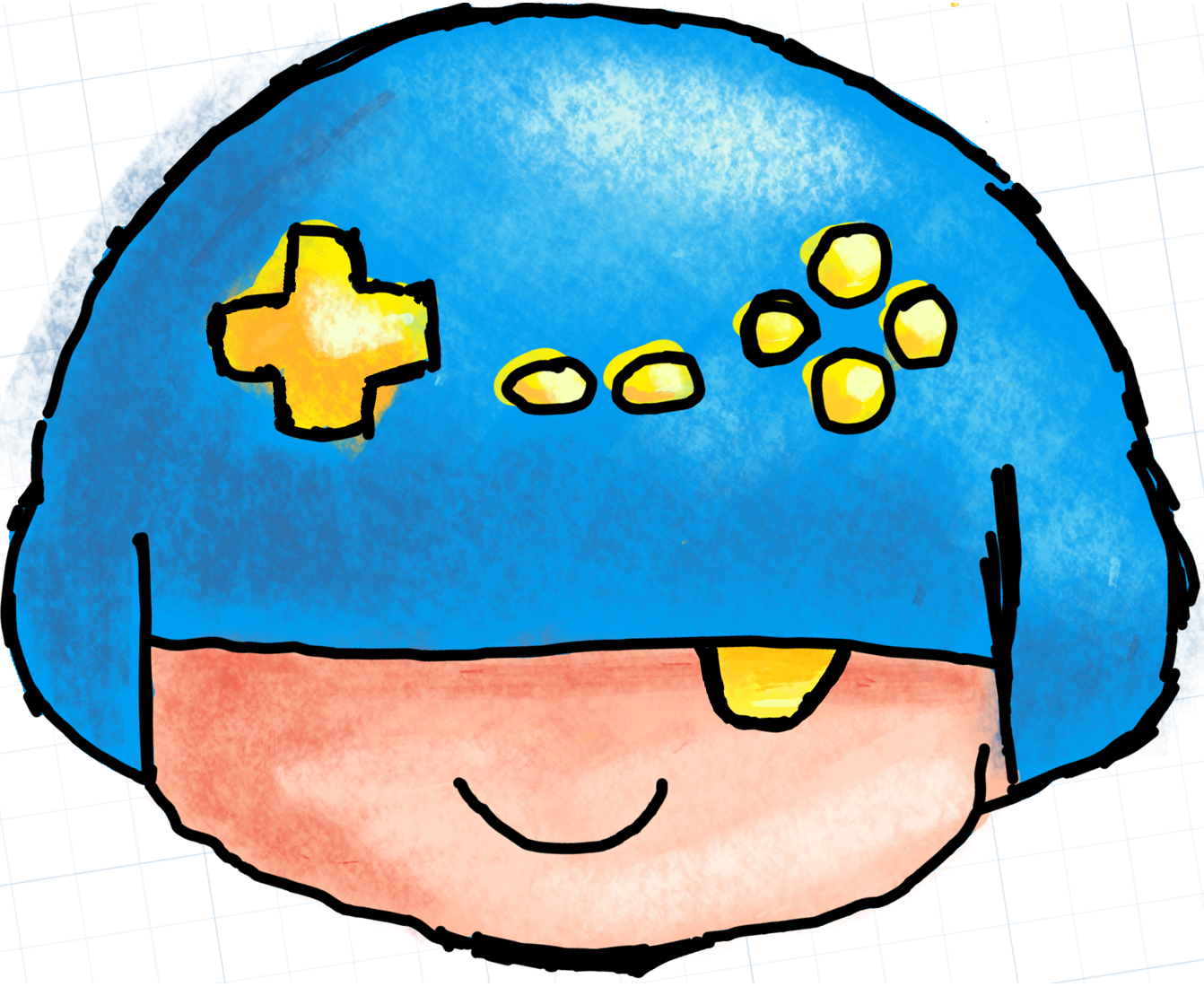Share This Article
Is Rogue Waters worth your time? I think so, but it wasn’t an easy conclusion to reach. Roguelikes are inherently fun due to their randomized levels, and in the end, Rogue Waters turns out to be a really fun and addictive pirate game.
But at the same time, their unique take on the genre isn’t always enough to hide some of its less enjoyable features, which I’ll talk about later.
With this in mind, let’s dive into this Rogue Waters review for the Steam Deck and highlight why you should consider purchasing it, while also discussing some of its flaws.
Disclaimer: I was given a review code for Rogue Waters, but as usual, I’m here to deliver my honest opinion.
The Setting and Plot
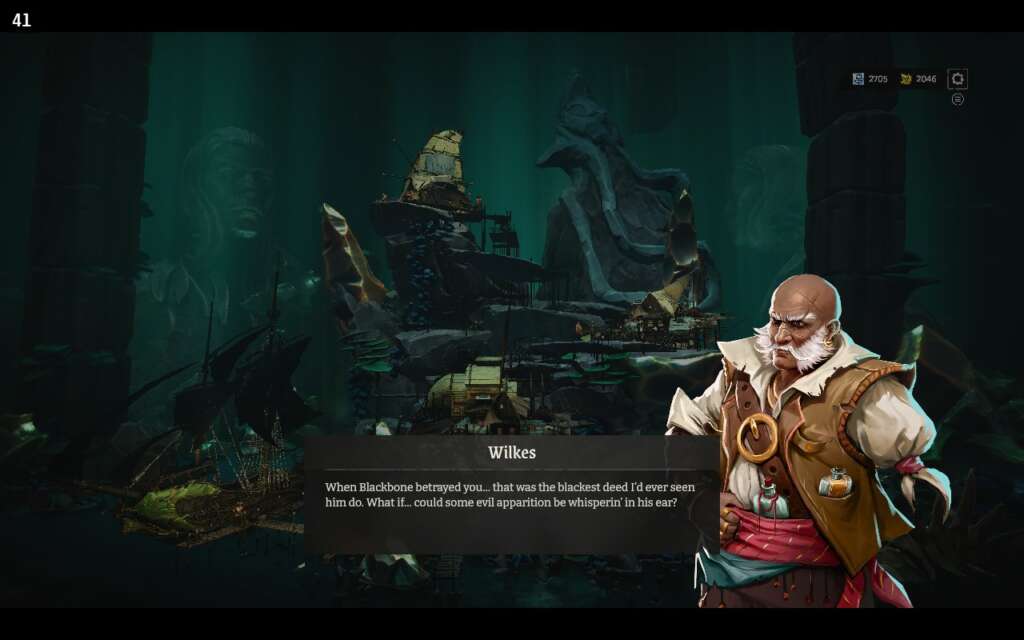
Rogue Waters is all about sailing the seas, with Captain Cutter leading the charge.
After a squabble with his former captain, Backbones, he finds himself in a realm between life and death, possessed by a spirit called Shiv.
Cutter learns how powerful and influential Backbones is over the oceans. Without hesitation, he assembles a new crew and focuses his efforts on defeating the treacherous pirate. However, he soon finds out this won’t be an easy task.
I’ll be honest, I wasn’t following the story that closely at first, since I just wanted to battle pirates on the high seas in Roguelike fashion. However, I became invested in the characters and the mystery surrounding Shiv, which motivated me to see the story through to the end.
If you’re looking for a fun pirate story about betrayal and revenge, with some great voice acting in the mix, Rogue Waters is the game for you. Now, all that’s left is to see if the gameplay holds up.
Gameplay
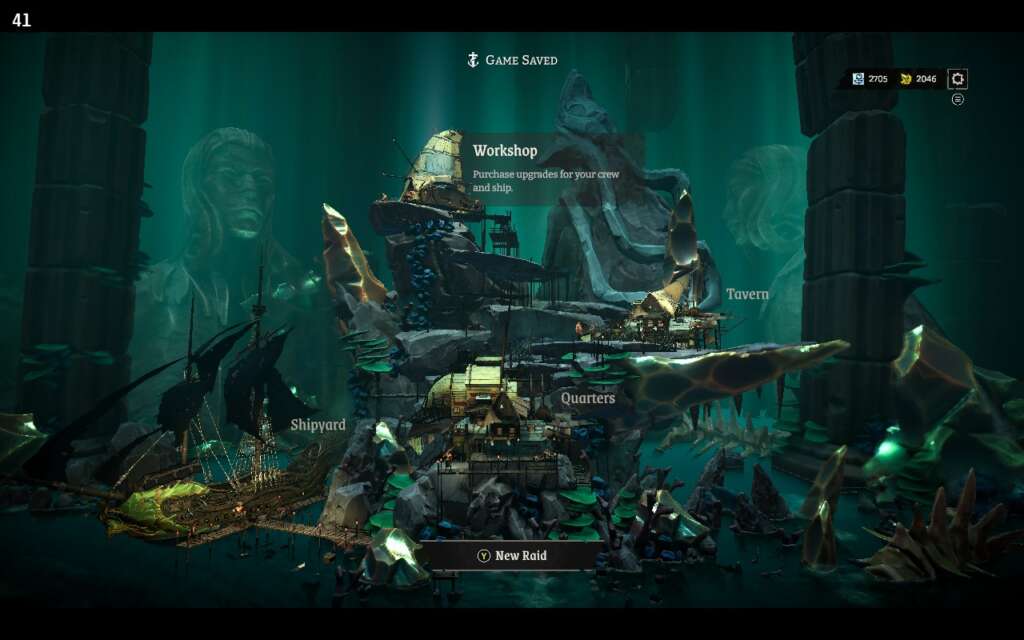
The game can be divided into several parts:
- Main Hub
- Choosing your path
- Battle
- Cannon Battle
- Battles on board
The battles are the highlight of the gameplay. But before starting a Raid, you need to prepare your ship and crew.
Main Hub

The Main Hub is where Captain Cutter and his mates return after they die in battle. Here, you can customize your ship and crew to improve your odds in the next Raid. You can equip cannons for ship combat and modules that provide buffs to your crew.
You can also recruit new crew members, with 5 classes to choose from. Since crew members take permanent damage after a raid, you’ll often hire new crew members and rotate them in and out.
Choosing Your Path
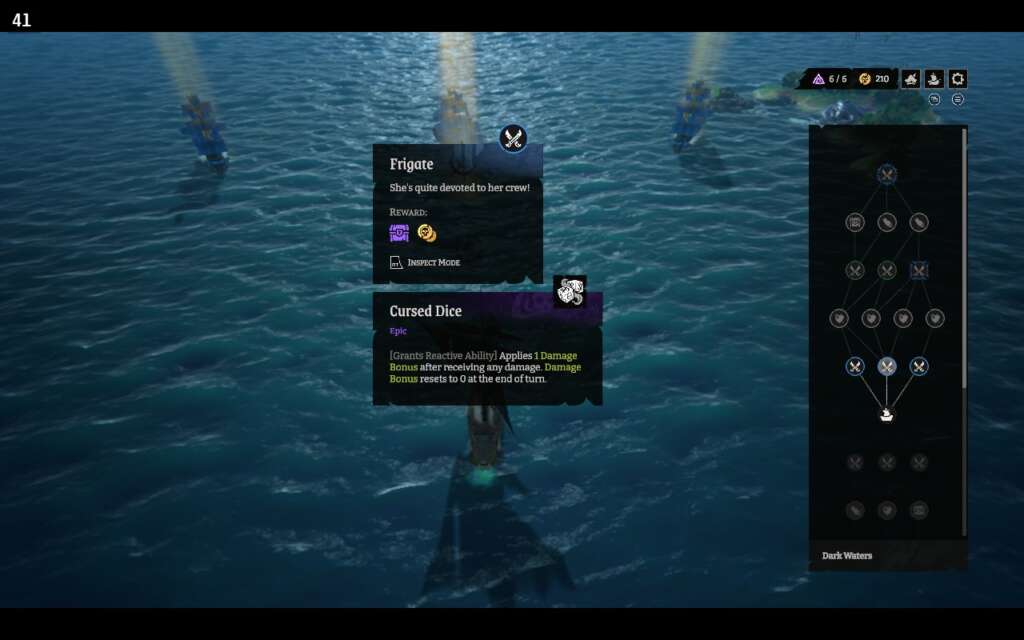
When you set sail, you’ll choose the raid you want to take on. I often went for the shorter ones to gain rewards quicker and upgrade my ship and crew before tackling the main story raids.
Raid encounters are randomly generated, so you won’t always get the same upgrades. You can see the paths ahead, but you won’t know if you’re heading toward a safe outpost or an enemy ship. And if it’s an enemy ship, you better prepare your cannons.
Pirate Brawl: Prepare Your Cannons
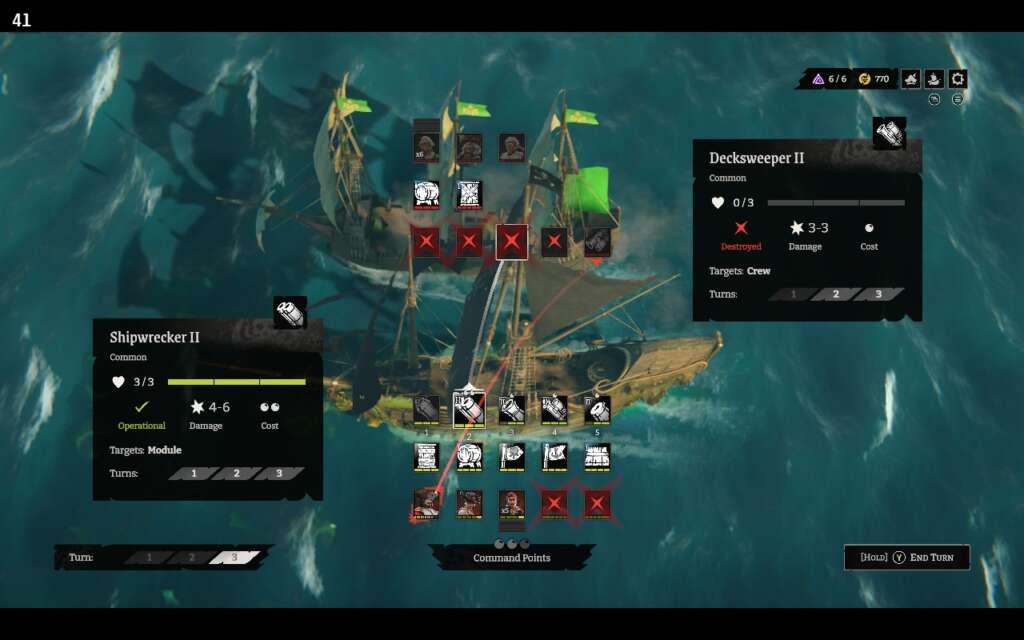
Before boarding an enemy ship, you’ll enter a cannon battle, which can sometimes determine the outcome. This can be frustrating, as you’ll know you’re heading into a losing battle once you touch the opposing deck.
During cannon battles, you can target the enemy’s cannons, crew, or modules, and the enemy will do the same. The longer you stay in a raid, the stronger the enemy ships become, forcing tough decisions, like sacrificing your own modules or crew to destroy enemy modules.
Certain modules can’t be ignored, especially early on, like one that gives +1 armor to the entire enemy crew, which could render your attacks useless.
But if you succeed, you’ll gain coins and items to give you an edge in the next battle. You can even choose which rewards you’ll receive after each encounter, so choose wisely!
All Aboard!
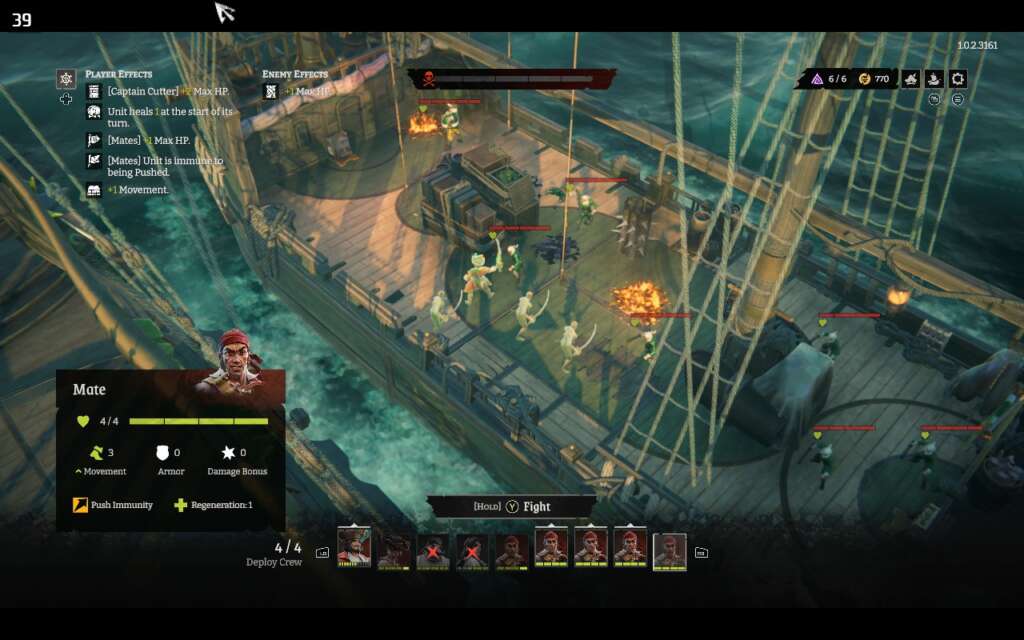
The highlight of the game is the turn-based battles, which take place on a grid. You can bring four crew members at a time, but if they die, they can’t be replaced, leaving you potentially outnumbered by up to 10 enemies.
If you use good modules and the environment, you’ll still have a fighting chance. You can push enemies against walls or throw them off the boat for extra damage, adding depth to each battle.
Sometimes, even strategic positioning isn’t enough, and that’s where sea monsters like the Kraken come into play. These mythical creatures can turn the tide of battle, but they require Abyssal Energy to use, so choose your moments carefully!
The End of the Voyage

At the end of a raid, you can upgrade your ship, gear, and crew before setting sail again. Or, like me, you might complete the main story and feel less incentive to continue due to the game’s repetitive nature.
My biggest problem with Rogue Waters is the repetitiveness of the gameplay. The concept is unique, but after a while, it can become monotonous, especially if you’re not progressing through the main story. Cannon battles, in particular, often felt like a chore.
That said, the game deserves praise for its engaging battle system, well-acted story, customization options, and playtime of around 10–15 hours.
For those looking for a fun pirate-themed roguelike, Rogue Waters is worth your time—just keep its shortcomings in mind.
Additionally, I played on my Steam Deck, and while the game isn’t officially supported, the experience was smooth with medium graphics settings to optimize the frame rate.
In conclusion, I can confidently say that Rogue Waters is worth your time and money, especially if you’re a fan of pirates!
Pros:
• Fun and addictive pirate-themed gameplay with a unique roguelike twist.
• Engaging turn-based battles with strategic depth, such as pushing enemies and environmental interactions.
• Customizable ship and crew with five different classes and upgradable skill trees.
• Mythical sea creatures like the Kraken add an exciting dynamic to battles.
• Great voice acting and a well-acted story.
• Smooth experience on Steam Deck with adjusted graphics settings.
• Playtime of 10–15 hours for the main story.
Cons
• Repetitive gameplay outside of the main story, which may diminish long-term appeal.
• Cannon battles can be frustrating and feel like a chore.
• Lack of official Steam Deck support, requiring graphics adjustments for optimal
• Limited crew variety visually, despite having different roles and skill trees.
